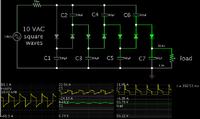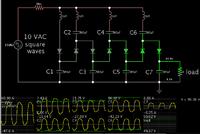Peng Yao
Newbie level 4

- Joined
- Apr 20, 2014
- Messages
- 7
- Helped
- 0
- Reputation
- 0
- Reaction score
- 0
- Trophy points
- 1
- Activity points
- 47
Is it possible that a charge pump could provide maybe 300W in the output? for example 50V and 6A in output? Thanks!





